Zenith 7G605 Transoceanic - the Clipper
Posts: 15,304
Threads: 532
Joined: Oct 2011
City: Jackson, NJ
Well, the moment of truth. I think I bought this radio over 3 years ago....if not 4.
After having the Tropic restored with all that bunch of SW bands I decided it's time for the Clipper to get fixed up.
I know of some pitfalls, but upon opening it I realized I will have to be careful and learn some things from people with experience of having done it.
1. The asbestos-covered shelf.
The asbestos was there for a reason, I think - something probably heats up enough to warrant some sort of protection as the shelf is wood.
I also am not paranoid about asbestos, considering most of us grew up around it; "don't disturb the crap and it won't stink" is the principle. Plus it is not like it is uranium, cyanide or ricin there, one just has to be careful enough, and I'd like to keep it as authentic as I possibly can.
So: is there a way of stabilizing the asbestos during the assembly/disassembly (spray that is not heat-degradable)?
If some of it got baked on the chassis' rim, what's the best way of cleaning it off? I am not a big fan of wearing masks and respirators.
2. What is the procedure of removing the chassis without damaging the attached parts: some of those do not look too sturdily attached to anything and bend and flex.
So far those are the Qs, electrically I think I can manage myself and if I need help in getting to the silver micas etc I will ask.
So, if anyone has very specific experience with this very radio, please share your experience here with me.
Mike.
People who do not drink, do not smoke, do not eat red meat will one day feel really stupid lying there and dying from nothing.
Posts: 619
Threads: 42
Joined: Mar 2017
City: Gap Mills Wv 24941
to the heat and asbestos....
your auto parts store sells VHT spray paint and some up to 3000degF.
I would spray the fluid into the cap of the spray can,,, then brush it onto the asbestos.
pics for sure....
i have an early 80's transoceanic, love it.
Posts: 3,102
Threads: 54
Joined: Apr 2011
City: Lexington, KY
Below is a pretty good thread showing the removal of the chassis:
http://antiqueradios.com/forums/viewtopi...1&t=315710
As far as stabilizing or sealing the the asbestos there seems to be a variety of opinions so I'll let you do a search and decide what you think is best. Don't you have two of these Mike?
John KK4ZLF
Lexington, KY
"illegitimis non carborundum"
Posts: 15,304
Threads: 532
Joined: Oct 2011
City: Jackson, NJ
Scott
thanks, good idea.
John
Thanks for the link. And, yes, I have two of these. One without the front door, but otherwise complete, and another one with the door. I think of first removing one chassis, and then as I learn things, remove the other one and then doing two in parallel. I hope I could restore both to working condition but should I really need something that is not immediately available, I can make one a donor, though I'd prefer not to.
Mike.
PS. Just looked at the thread by that link - great and very helpful.
People who do not drink, do not smoke, do not eat red meat will one day feel really stupid lying there and dying from nothing.
(This post was last modified: 07-02-2018, 10:51 AM by morzh.)
Posts: 15,304
Threads: 532
Joined: Oct 2011
City: Jackson, NJ
Pulled the chassis out.
Wasn't too difficult.
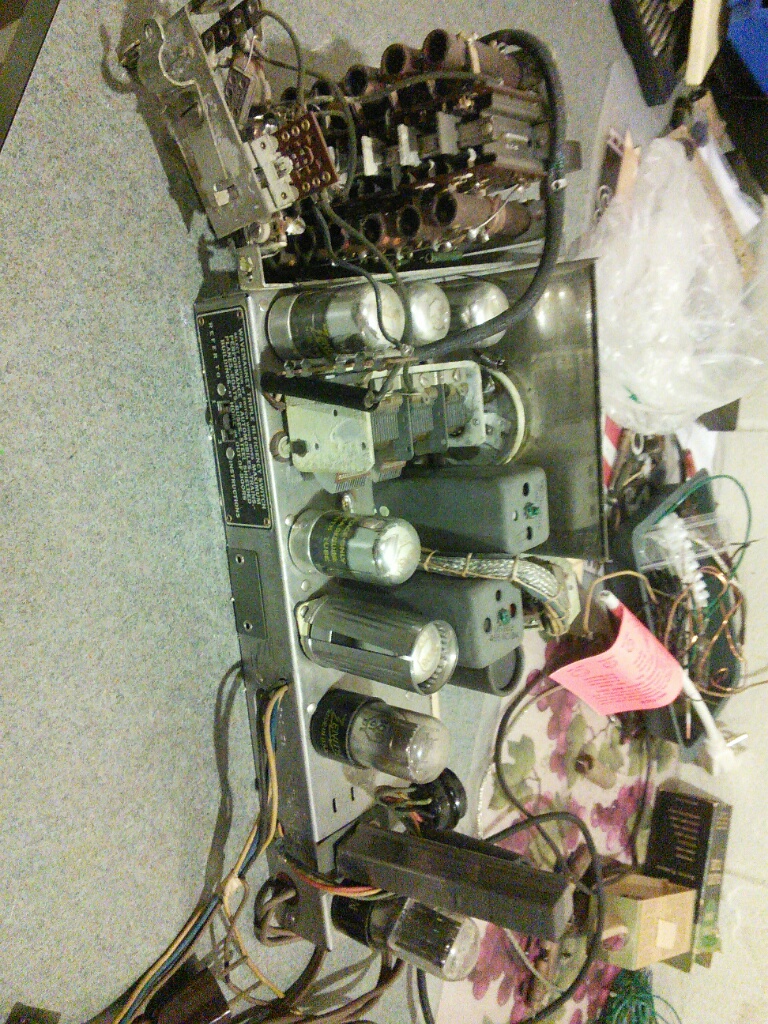
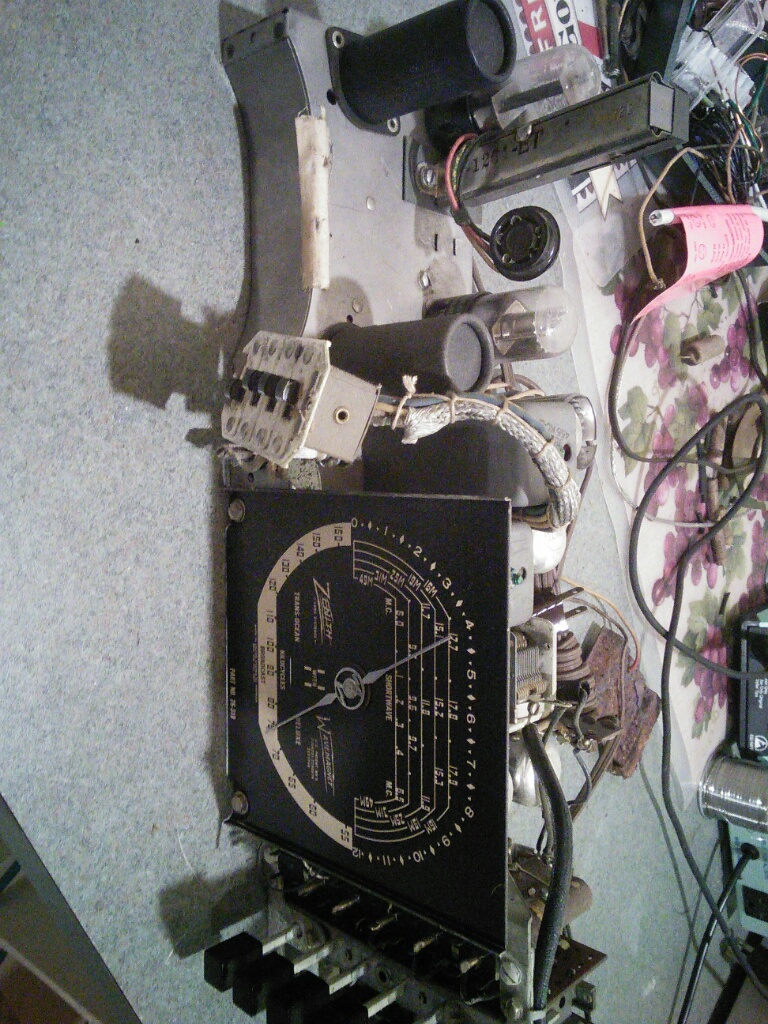
The battery holder rusted out. Not sure I'll need it, as in case I make a battery it is unlikely to use it. Or not?
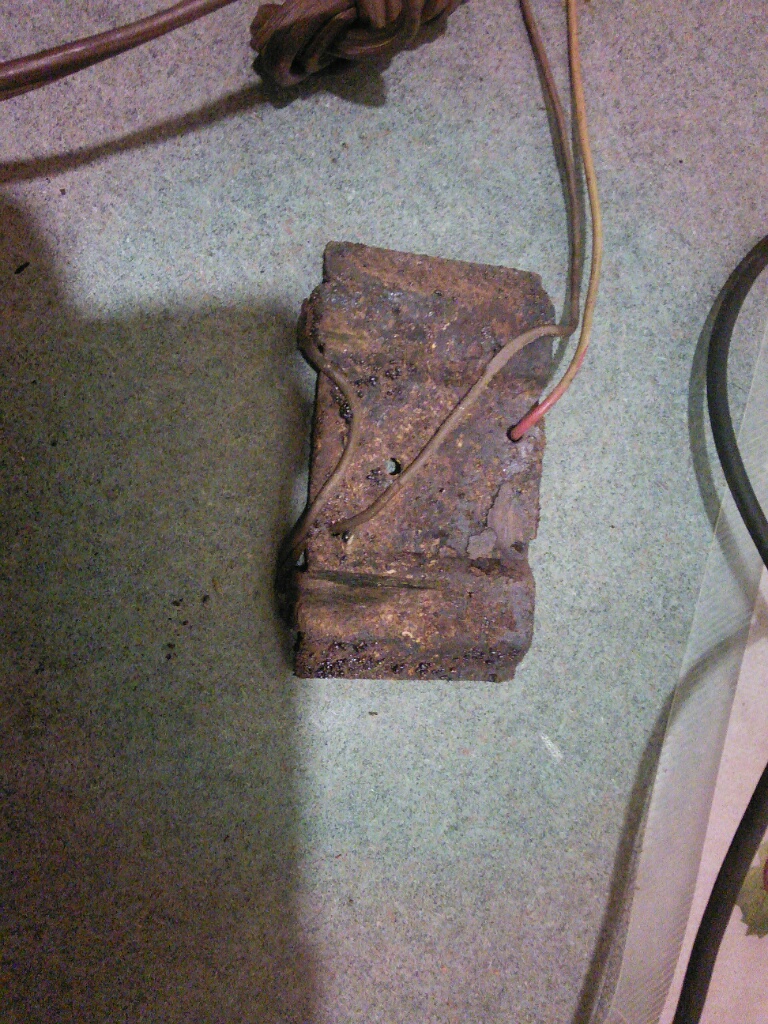
The tuning cap is covered with something that looks like lithium grease.
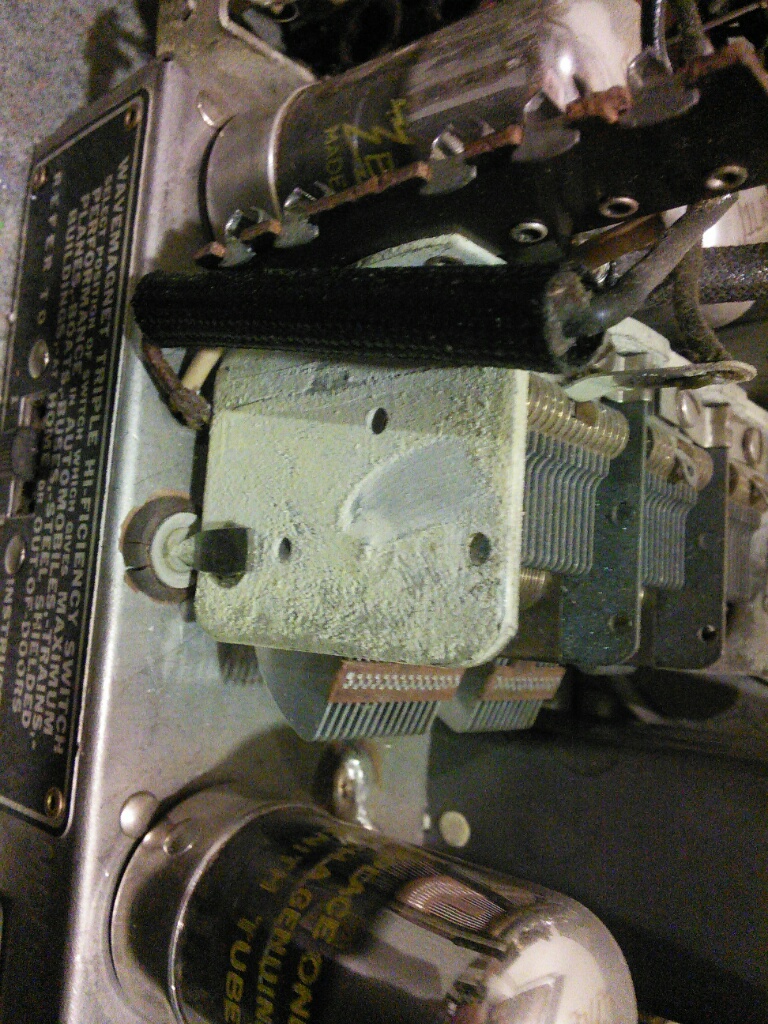
People who do not drink, do not smoke, do not eat red meat will one day feel really stupid lying there and dying from nothing.
Posts: 4,611
Threads: 51
Joined: Sep 2008
City: Sandwick, BC, CA
Mike;
Asbestos is water soluble, somewhat, so if you need to remove some residue that is stuck to the chassis wet it down first. You can clean asbestos much the same way, it's not like plaster where it will dissolve into a liquid or putty, but you don't want to scrub at it with a brush either, spraying it with soap and water, and then placing it to dry on some plastic or glass works. I think you could probably coat it with high heat enamel, or something like sodium silicate, both are burn resistant.
In terms of health hazards I would be more concerned about that substance on the back of the tuning condenser frame, it may be cadmium sulfide or cadmium oxide, neither one is good to ingest or inhale as it is a heavy metal much like lead. Fortunately you can clean it off using mineral spirits or a metal polish, which will allow you to contain the dust.
Regards
Arran
Posts: 15,304
Threads: 532
Joined: Oct 2011
City: Jackson, NJ
Arran
Only some asbestos is water soluble, so when it gets inhaled, it is dissolved and creates no problems; it's the other one that is not soluble which will create problems as it stays lodged without being dissolved.
The stuff on the cap.....it seems greasy, not dusty. And it is on one side of the cap. If it is cadmium-based, where did it come from and why is it there?
People who do not drink, do not smoke, do not eat red meat will one day feel really stupid lying there and dying from nothing.
Posts: 619
Threads: 42
Joined: Mar 2017
City: Gap Mills Wv 24941
that thing looks complicated!!
Posts: 15,304
Threads: 532
Joined: Oct 2011
City: Jackson, NJ
Well, this is the first ever multi-SW-band portable radio. Has to be somewhat complicated. 
But in reality it is not that complex, other than the connections to things around the chassis; the chassis itself is no more complex than any comparable tube count radio with more than one band.
People who do not drink, do not smoke, do not eat red meat will one day feel really stupid lying there and dying from nothing.
Posts: 15,304
Threads: 532
Joined: Oct 2011
City: Jackson, NJ
Bought the fully assembled battery from Ed (with WWII) logo.
He has it down to an art and I would have to do this...with less spectacular results and for many hours. Considering there are still expenses, not a huge price to pay.
People who do not drink, do not smoke, do not eat red meat will one day feel really stupid lying there and dying from nothing.
Posts: 13,776
Threads: 580
Joined: Sep 2005
City: Ferdinand
State, Province, Country: Indiana
(07-05-2018, 07:03 AM)morzh Wrote: The stuff on the cap.....it seems greasy, not dusty. And it is on one side of the cap. If it is cadmium-based, where did it come from and why is it there?
This is what happens to cadmium plating when it deteriorates over the years. I think it usually occurs as a result of the radio being stored someplace like a barn or basement.
For the sake of your health, put on a respirator and gloves, get some suitable cleaner for metal and get that stuff off your tuning condenser! (And do this outdoors!)
--
Ron Ramirez
Ferdinand IN
Posts: 15,304
Threads: 532
Joined: Oct 2011
City: Jackson, NJ
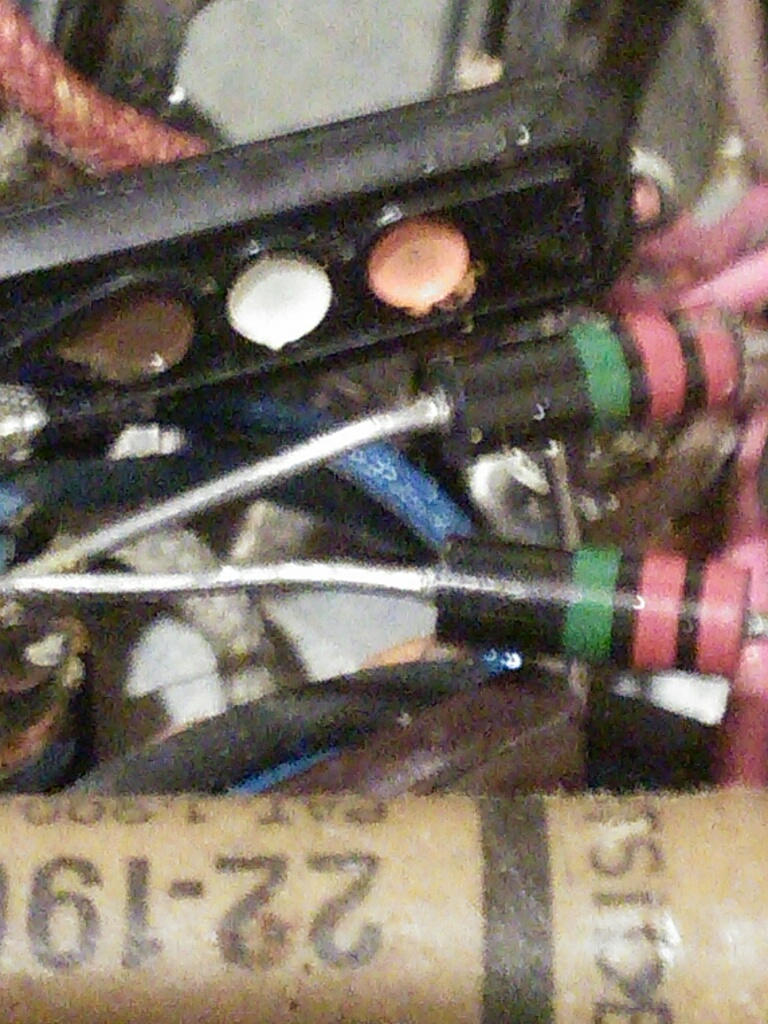
What part is this? A resistor?
The colors are Brn-Yel-Org.
People who do not drink, do not smoke, do not eat red meat will one day feel really stupid lying there and dying from nothing.
Posts: 13,776
Threads: 580
Joined: Sep 2005
City: Ferdinand
State, Province, Country: Indiana
By its length, I would guess it is a resistor. I have seen resistors which looked like that before.
--
Ron Ramirez
Ferdinand IN
Posts: 2,128
Threads: 18
Joined: Oct 2008
City: Merrick, Long Island, NY
Well, measure it and see if it is a resistor. Can't be sure but looks like 310 ohms if the arrow is the last digit.
Posts: 15,304
Threads: 532
Joined: Oct 2011
City: Jackson, NJ
There are 330 ohm on the list but I can't place it: there are discrepancies with the schin how it's hooked up.
340 ohm then. But it measures 24 ohm. In circuit. Maybe due to filaments.
People who do not drink, do not smoke, do not eat red meat will one day feel really stupid lying there and dying from nothing.
Users browsing this thread: 1 Guest(s)
|



